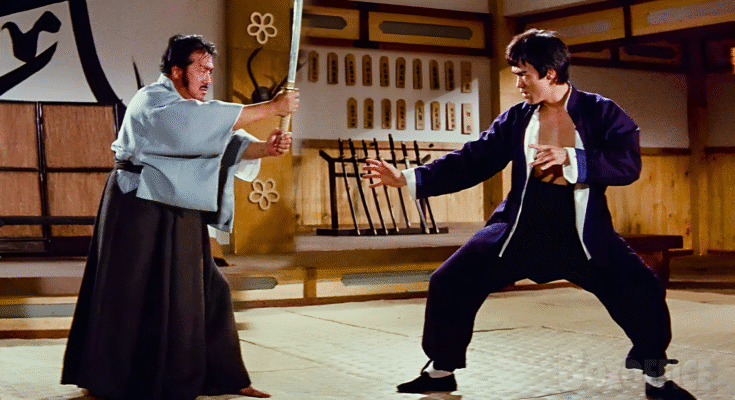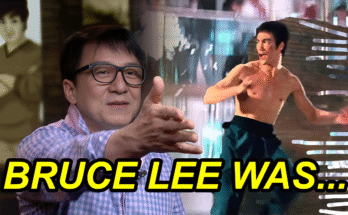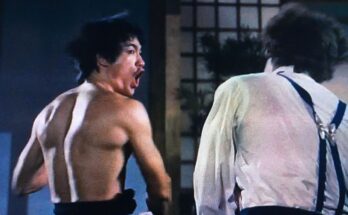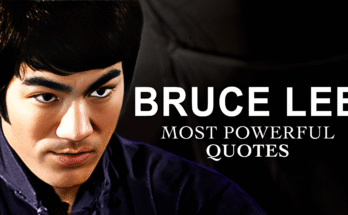Bruce Lee Avenges His Master and Beats Up Karatekas – A Cinematic Masterclass from Fist of Fury
Few scenes in martial arts cinema are as electrifying and emotionally charged as Bruce Lee’s iconic showdown in Fist of Fury. In this unforgettable sequence, Lee’s character, Chen Zhen, storms into a Japanese dojo to confront those responsible for the death of his beloved master. What unfolds is not just a flurry of punches and kicks, but a bold statement of honor, cultural pride, and personal vengeance.
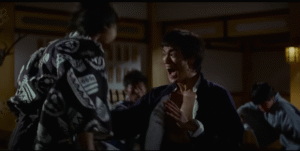
A Fight Fueled by Honor
The plot is simple, yet powerful. After discovering that his master, Huo Yuanjia, has been murdered and dishonored by a rival Japanese dojo, Chen Zhen sets out to confront the perpetrators. This isn’t just a brawl—it’s a mission to restore the dignity of his school and mentor. Bruce Lee enters the scene with quiet intensity, stating his purpose with calm resolve. From the moment he utters, “I came here today to avenge my master,” the tension in the room is palpable.
Unmatched Fight Choreography
The battle that ensues is one of the most gripping and expertly choreographed fight scenes in martial arts film history. Lee’s speed, precision, and explosive power are on full display as he takes down multiple opponents with fluid, lethal grace. Every strike is delivered with purpose. There’s no wasted movement. The camera lingers just enough to let the viewer feel the impact of each blow.
What makes the scene more than just a physical contest is its emotional weight. As Chen Zhen dispatches the karate practitioners one by one, we’re reminded that this isn’t just about violence—it’s about justice. Bruce Lee fights not for ego or sport, but to uphold the legacy of a fallen master.
Symbolism and Cultural Undertones
This scene, and Fist of Fury as a whole, carries deep cultural significance. Released during a time of heightened awareness of Chinese identity and pride, the film pits Bruce Lee’s character against foreign oppression and disrespect. His defiance, especially against the backdrop of historical tension between China and Japan, struck a powerful chord with audiences across Asia.
Bruce Lee becomes more than a character—he becomes a symbol. His refusal to bow, his rejection of insults, and his relentless drive for justice represent the voice of a generation unwilling to accept humiliation.
Legacy of the Scene
More than five decades later, this fight remains one of Bruce Lee’s most celebrated moments. It showcases not only his martial prowess but also his charisma, screen presence, and unwavering intensity. The sequence has been referenced, parodied, and paid homage to in countless films and shows.
It also set a new benchmark for martial arts choreography. The clarity of motion, the emotional stakes, and the technical excellence elevated fight scenes from background entertainment to narrative centerpiece.
Final Thoughts
“Bruce Lee avenges his master and beats up karatekas” isn’t just an action clip—it’s a timeless piece of cinema that speaks to the power of conviction, the pain of loss, and the strength of cultural pride. It captures Bruce Lee at his fiercest and most focused, delivering not only physical blows but a message that still resonates: honor, once challenged, must be defended.
If you’ve never seen Fist of Fury, this scene is the perfect reason to start.
